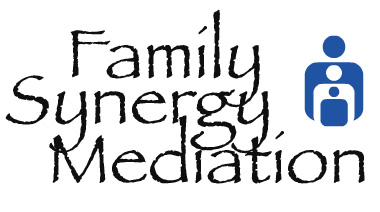Welcome! If you have good clarity on what’s important to you, your success in mediation can be a reality. Today’s topic is about getting clarity on your internal goals versus your external goals. Couples who do not work this out at all, or work it out incorrectly have more difficulty in the negotiations and the mediation can even be completely compromised.
Let’s define things a bit more. An Internal Goal is tethered to an internal value, and External Goals are tethered directly to something in the physical world. Confusing these two can lead to limited outcomes and rapidly ramp up the potential for unnecessary conflict so let’s spend a little time with each one to better understand the difference.
Let’s start with External Goals as that is where most parties naturally think of outcomes. Examples of External Goals could be:
-I need to keep the Marital Home.
-I am not paying any Spousal Maintenance.
-I am getting 50/50 parenting time or I’m leaving the mediation.
Sometimes Parties justify their External Goals by attaching them to Internal Goals to legitimize them. Some examples of that could be:
-I need to keep the Marital Home because I want to provide stability for the Children.
-I am not paying any Spousal Maintenance because it’s just not Fair.
-I am getting 50/50 parenting time since I am just as important as you to them.
The problem with framing your goals around External things is that it removes flexibility in solutions and reduces the outcomes to more of a win/lose option where only one of you can realistically receive the Marital Home, You will either pay or not pay Spousal Maintenance and will either get 50/50 parenting time or you won’t. This converts the topic into a limited resource worth fighting for.
You can analyze your goals using my proprietary Outside In Method to shift the negotiation in a more beneficial direction. Outside In is comprised of OUTSIDE or External Goals and INSIDE or Internal Goals. Evaluate your goals following the OUTSIDE approach to see if you have a problematic External Goal on your hands:
So the goal of “I must keep the marital home” could qualify as an External Goal using the OUTSIDE method. It is Unilateral, Potentially Subjective, Inflexible, Potentially Divisive and Potentially Exclusive. External Goals Create Win/Lose positions that form “Hills that people will die on” in a negotiation.
Ok, now let’s define what Internal Goals look like using the INSIDE approach:
So an Internal Goal could be something like “I want to share the equity in our home fairly and I want us both to have a reasonable home for us and our Children.” This goal focuses on the ultimate outcome and less on exactly how the goal is achieved. This leaves many potential options open for discussion and so there is no “hill to die on”.
So go through everything that is important to you and make a clear distinction between what is an Internal or External Goal before the Mediation. Try to move as many goals into the Internal Goal model using the Outside In approach. Be really honest and critical of your goals that come up as an External Goal to see if you are really wanting to be fair. Many people will use External Goals as a negotiation tactic to signal they are not flexible and there is no other option but to give in to their demands. Make sure this isn’t you, if you want the most out of the mediation process.
Let’s look at an example of using the Outside In Method to shift a goal that starts out as an External Goal and move it to an Internal Goal.
-Let’s look at the External Goal “The Kids need stability so I need the home since I was the primary care giver and it would limit the disruption to the children”. This is packed with OUTSIDE characteristics. This might be unpacked as the following core concerns:
-I am concerned about the Children’s Stability.
-The Children are used to me as the primary caregiver and I don’t want to change that.
-There may also be some internal thoughts that you may not afford another home, you were largely responsible for creating the current home, you also don’t wan’t the disruption of relocating yourself, etc. So if you properly identify what is really going on there and articulate them using the INSIDE approach you could arrive at something like this:
-“I accept there will be some disruption to the Children’s lives but I want to minimize it and instead focus on helping them Adjust and Recover.”
-“We should establish our “New Normals” as soon as possible so we can give the Children Stability in Both homes.”
-“Our Children should see both of their parents doing well.”
-“In the past I know I was the primary caregiver and you were the primary breadwinner and that both of us might need to adjust since our roles are changing.”
-etc.
Sound tough? You bet it is. This is why if you don’t get your goals clarified and positioned for success before the mediation it can cost you and near impossible to perform during a live negotiation. Without a plan of action to follow you will most likely plant your flag on your hill and fight for it, based on the thousands of disputants that precede you. Your negotiations can quickly be reduced to fighting for exclusive options that leave no room for success, that will escalate the conflict, and create more emotional wounds for yourself and your children. To help you work through this I am sharing my proprietary “Outside In Method” of Mediation Goal Assessment and Reframing for Success” worksheet available for download(pdf).
If you need help with framing up your goals before mediation it is a great use of the Private Caucus with the Mediator and the Mediator can help you better position you for success.
Lastly, you may wish to assign priorities to your Internal Goals since you may have to choose your path carefully through the mediation. This is a good way to center yourself before you negotiate and better provide for what’s going to be more important to you in five or ten years. Usually healthy children will win out over who gets what in the long run. It also prepares you mentally that you may not get everything you are hoping for so it’s more important to focus on the ones that are most important to you.
There was a client of mine many years ago who demanded she keep the house, which was quite large, for herself and their two young children. Her rationale was partially rooted in that she was the primary care giver and did not have the career. This meant that she didn’t believe it was right to begin any type of vocational training and employment as that meant their children would be in daycare while she “worked her ass off” just to not be with her children. This required a very significant Spousal Maintenance order to support this and she had used mostly External Goals as her strategy. The husband was struggling with this approach and the Parties were nearing an impasse that was headed to Court. There were a number of issues with this proposal and I asked her to try to reframe the goal into an Internal Goal. She was not able to do so, and I took a different approach.
I asked her to suppose she got everything she asked for. The House, the Maintenance, No expectation to establish a career until the kids were out of high school. I asked how long she would need this arrangement and she said at least 6 years. I then asked her to describe on year seven how she planned to establish and secure a sustainable career that paid at least the $15,000 a month before tax amount needed to support her living expenses, of which the house was a health portion of it.
I pointed out that Spousal Maintenance would only last four more years and then she would be on her own with no child support or spousal maintenance and all that responsibility. If she was unable to secure that level of employment she could find herself at the age of 54, with no support, home foreclosed on, no solid means of supporting herself and if the hopes of remarrying another suitor to support her failed, she could be in a real mess. A little dramatic, but not unrealistic.
There is also risk in placing the sole or majority of responsibility for your own survival on another person, in this case her husband, who could meet with an unfortunate suicide where life insurance wouldn’t pay. A scenario, also dramatic perhaps, but ripped from the pages of reality.
Instead, I inquired, what if you reduced your standard of living, sold the current home and each purchased more affordable homes where the additional spousal maintenance could be applied to education or starting a business instead of spent on standard of living. Then her long term risks would be reduced, her stress level would be reduced and her future self would be much better provided for.
It didn’t take her but a few minutes to reframe her goals and the Parties settled on a way more reasonable scenario. I received a call from her somewhere about five years later when she called to thank me. She had started a real estate business which offered her flexibility with her children and would benefit her future home upgrade ambitions.
She felt so much better taking more responsibility for her life under more manageable terms. She commented that it was still shocking to her that she asked for all those things in the mediation and didn’t really know why. It just seemed expected that I do it, she said. I’m so grateful for you helping me reframe to what was a more valuable direction and outcome.
This is the power of making sure you are fighting for the right goals and my “Outside In Method” of Mediation Goals Evaluation and Reframing Worksheet is yours to download from my website to help you to evaluate and frame your goals. Analyzing your goals with the INSIDE and OUTSIDE methods can make a big difference in your outcomes and successes, and making sure you have success in the Right outcomes.
In our upcoming Episode we will review Pre-Mediation Disclosures and Why You Need Them. By providing the Mediator with valuable information prior to the mediation you help the mediator more quickly identify areas of potential agreement, areas of conflict, make the mediation more efficient and less expensive. Yet another way you can nudge your Mediation toward costing less, and being more successful.
Thank you for your time and attention today. You are one step closer to better outcomes that will last the rest of your life.
Blog Categories
Blog Tags


Aug 14, 2024 • 12:59
Whether you're in the midst of a divorce or looking to be prepared for any future challenges, this podcast equips you with the tools to achieve the best possible outcomes in your mediation journey.

Aug 25, 2024 • 17:56
In this episode of the Pro Se Divorce Podcast, Tom Davis dives into the crucial difference between internal and external goals in mediation. Understanding these distinctions is key to achieving success. Tom explains how external goals, often tied to tangible assets like the marital home or spousal maintenance, can create…

Sep 2, 2024 • 15:53
In this podcast episode, the importance of Pre-Mediation Disclosures in mediation is discussed, focusing on how these disclosures can contribute to a successful mediation process. There are two main types: Financial Disclosures and Mediation Topics Disclosures, which can sometimes be termed Confidential Pre-Mediation Disclosures.

Sep 9, 2024 • 33:10
This episode is essential for anyone who wants to maximize the value of their mediation by understanding and working effectively with their mediator.

Sep 16, 2024 • 14:45
In this episode of the Pro Se Divorce Podcast, Tom Davis dives into the critical importance of pre-mediation planning to avoid emotional and negotiation triggers that can derail the mediation process.

Sep 23, 2024 • 11:58
By the end of the episode, you’ll have practical tools to turn one of the most common irritations in mediation—interruptions—into opportunities for clearer communication and more productive negotiations.

Sep 30, 2024 • 11:58
In this episode, we explore the critical role that asking the right questions plays in mediation.

Oct 8, 2024 • 53:04
In today’s episode, I’ll walk through how BATNA, WATNA, and the Zone of Possible Agreement (ZOPA) play critical roles in spousal maintenance negotiations and how these tools helped me close a seemingly impossible gap.

Oct 14, 2024 • 24:35
In this episode of the Pro Se Divorce Podcast we explore the value of using Private Caucuses in divorce mediation. Private Caucuses offer a confidential space where each party can speak freely with the mediator, allowing for more open communication, problem-solving, and emotional venting. We also share a real-life story…

Oct 21, 2024 • 1:04:40
In this episode, Tom Davis emphasizes the importance of prioritizing children's emotional well-being and reducing conflict during divorce mediation, rather than focusing on material concerns like overnights and holidays.
